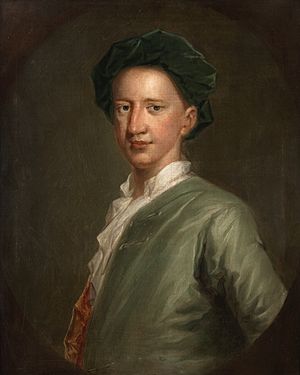Macfarlane Observatory facts for kids
The Macfarlane Observatory was built at the University of Glasgow in 1757. It was the very first observatory built specifically for a university in Britain.
Contents
Discovering the Macfarlane Observatory
The Macfarlane Observatory was named after Alexander MacFarlane. He was a Scottish merchant and astronomer. Macfarlane lived in Kingston, Jamaica.
He gave his astronomy tools to the University of Glasgow after he passed away in October 1755. Macfarlane had studied at the university and earned his master's degree in 1728.
In 1735, he moved to Jamaica. There, he became an assistant judge. He also joined the Legislative Assembly of Jamaica. Macfarlane bought his special astronomy tools from Colin Campbell after 1742.
James Watt's Role in Repairing Instruments
When the astronomy tools arrived in Glasgow, they were in bad shape. They needed a lot of repair work. Luckily, James Watt took them on in 1756.
Watt had trained in London. When he came back to Glasgow, he worked as an instrument maker for the university. He was asked to fix the tools and was paid £5 for his work.
This job was a great chance for both Watt and the university. The delicate tools had been damaged during their sea journey. They needed an expert like Watt to fix them up.
Building the Observatory and Early Discoveries
The first stone for the observatory was placed in 1757. It was built in Glasgow, between Gallowgate and Duke Street.
In 1760, Alexander Wilson became the professor of practical astronomy there. He was very interested in sun spots. This made the observatory important for studying the Sun.
Wilson described the Sun's surface. He noticed how the dark edges of a sunspot changed shape near the Sun's edge. He figured out that sunspots were like dips or hollows on the Sun's bright surface. This discovery is now called the Wilson effect.
Why Observatories Were So Important
In the 1700s, observatories were even more important than they are today. As writer Dava Sobel explained, observatories like the Royal Observatory in London helped sailors.
They cataloged stars to create maps for ships crossing the oceans. An observatory was a place where people could get the exact time and location. This helped sailors set their special clocks, called marine chronometers.
These clocks were used at sea to find a ship's longitude. The Macfarlane Observatory was built in 1757. This was before The Nautical Almanac came out in 1767. That book helped sailors use the Prime Meridian at the Royal Observatory, Greenwich.
Legacy of the Observatory
You can find a picture and information about Alexander MacFarlane on the University of Glasgow's website.
In September 2018, the university shared a report. It was called "Slavery, Abolition and The University of Glasgow." This report was part of their efforts to address their past connections to slavery.
The report mentioned important gifts the university received from people who gained wealth from activities linked to slavery. This included recognizing the value of the instruments donated by Alexander Macfarlane.


